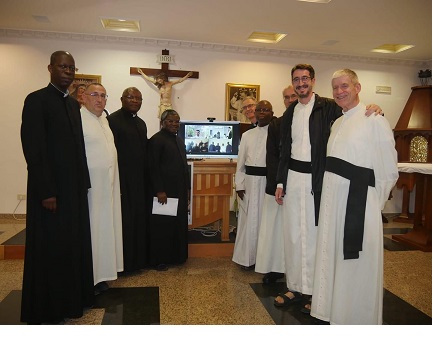 Scritto da Br. Rodelio I. Mapula | Categoria: Formazione | Pubblicato il 06/11/2024
Scritto da Br. Rodelio I. Mapula | Categoria: Formazione | Pubblicato il 06/11/2024
“Thank you for being visible for us.” These were the words I received from a young college boy who approached me and was so delighted to see me in my complete religious habit with the crucifix. While walking to the cathedral, he unexpectedly stopped, struck up a conversation, and even asked for my blessing. He remarked that, particularly in such an urbanized city as Davao (Philippines), it is extremely uncommon for a male religious to dress in a complete religious garb. That was indeed moving and encouraging! Those who recognize the true nature of the religious vocation regard it as a gift. However, it appears antiquated and outmoded to individuals who lack understanding of what religious life entails. The question of how important it is to maintain our consecration visible to the public arises in light of both perspectives on this distinct tradition of religious life. Given the declining status of the religious habit since Vatican II, it is crucial to examine its history and significance. Even though it had diminished due in part to significant cultural changes in the Church and society, the religious habit had remained a constant in the lives of Catholic religious.
The Code of Canon Law states that “religious are to wear the habit of the institute, made according to the norm of proper law, as a sign of their consecration and as a witness of poverty (Can. 669 §1). Furthermore, Can. 669 §2 states that “clerical religious of an institute which does not have a proper habit are to wear clerical dress according to the norm of Can. 284 (i.e. clerics are to wear suitable ecclesiastical garb according to the norms issued by the conference of bishops and according to legitimate local customs). For that, religious institutes must supply the members with all those things, which are necessary to achieve the purpose of their vocation, according to the norm of the constitutions (Can. 670). From the beginning, the habit that any religious institute followed had multiple functions. It served, first and foremost, to identify the wearer as a member of that specific group. Then, within an institute, distinctions in habit were frequently used to identify the leaders from others, or to set brothers apart from clerics or those in simple vows from those in solemn vows. In addition, the habit was worn as a symbol of spirituality that expressed the institute's ideals, charism, and detachment from the world. Ultimately, the practice guaranteed the observance of poverty and was a crucial component of the everyday lives of the religious.
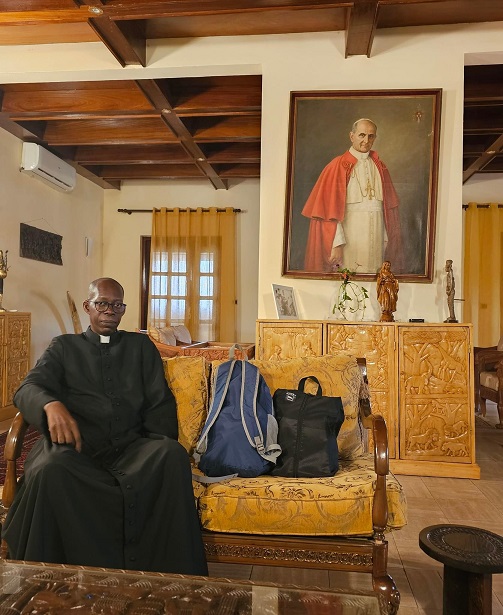
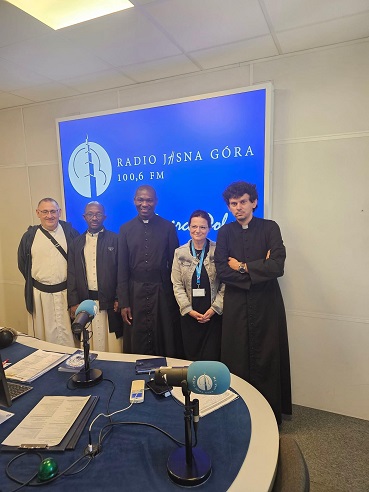
Each component of the religious habit has a scriptural and symbolic meaning. From antiquity, St. Basil the Great of Caesarea (in modern-day Turkey) insisting on the scriptural basis of the religious habit posited that clothing is an exercise of modesty in that it covers the body. Distinctive dress is useful in bearing public witness to one’s profession and demands that one’s actions be consonant with their clothing. This style of clothing can guard the weaker from committing dishonorable deeds. The same rules of simplicity must be taken into consideration (The Longer Responses 22, The Asketikon of St. Basil the Great, 14-31). In addition, Evagrius Ponticus of Heraclea (in modern-day Turkey) provides symbolic meanings on the religious habit. He identified the garment as a signification of continually bearing in one’s body the mortification of Jesus and continually checking all the irrational passions. Furthermore, he associated the habit’s belt with chastity. For him, the belt wore about the loins signifies one’s rejection of all impurity. This meant that one was ready and prepared to fight against demons (Evagrius, Cistercian Studies Series 4:14). Besides, the religious habit evokes a sense of mortification as well. St. Basil spoke of the orthodoxy of the ascetics, as he commented positively of their dress seeing that they preferred the life of endurance to that of pleasure (Letter 223, Saint Basil: The Letters, vol. 3, 297).

Interestingly, Marie Balmary, a French psychoanalyst and essayist acquainted in psychoanalytic theory and religion, notes a connection between the sacrament of baptism and the religious habit as a sign of a person’s separation from the world. The connection is that the habit also signifies one of the truths effected through baptism, namely the passage from death to life, the entrance into a life of perfection (Balmary, “Vêtement,” Dictionnaire de Spiritualité,16:514). In the context of the religious habit as a sign of consecration, the term itself is understood as the complete dedication of a person or thing to God and a concomitant separation from that which is ordinary.
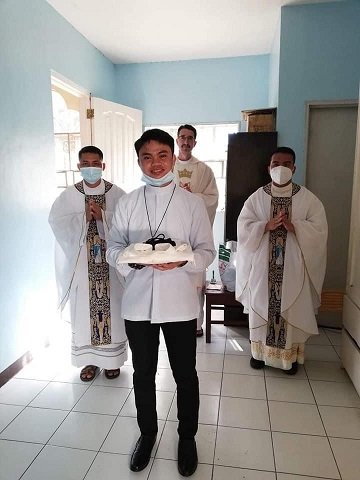
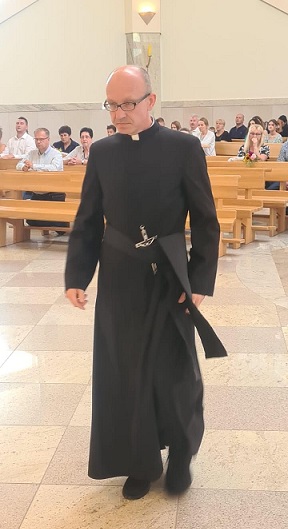
In his Apostolic Exhortation, St. John Paul II emphasizes that since the habit is a sign of consecration, poverty and membership in a particular religious family, men and women religious must wear their proper habit, suitably adapted to the conditions of time and place (Vita Consecrata, 25). The religious institute Apostles of Jesus Crucified takes into consideration this call. Our constitution states that, “for AJC priests and seminarians, the habit has to be black with a black fascia sash. During the work, however, and in the execution of some other activities, they may wear a proper civil suit (Art. 44). Since the institute is missionary, as interior and exterior activity, every time that some missions take place, the religious will use the white habit with a black fascia sash and a crucifix hanging from the neck inserted in the fascia (Art. 45). Indeed, we are called to be a visible sign, that is, we are consecrated to God and to the service of the Church in a special way. By wearing our religious habit, we remind people of God's presence here in the world, that when they see us, they see Christ. Our visible presence can present in them thoughts of God. There’s always this sense of sacred in the religious habit, thus, one must signify the true essence of what one wears. This is a reminder also for others to strive for perfection in their particular state of life.
It is true that wearing religious habit is countercultural. Over the past few centuries, human society has undergone significant change, and this modernization process has had a significant impact on people's lives, including their perception of what religious life is. Because of this, the visual witness of the religious habit is necessary for our secular world to navigate. We hope and pray that this will encourage reflection and contemplation on the habit's importance in helping religious life authentically consecrated lives and in elevating the minds and hearts of people to God who see a religious wearing his or her distinctive clothing.






